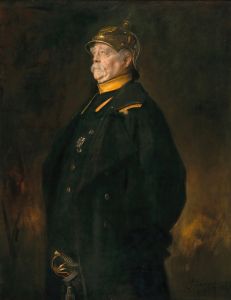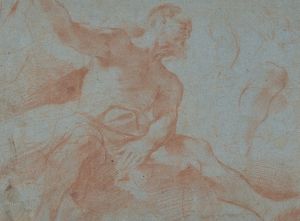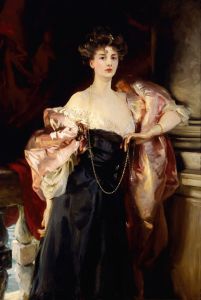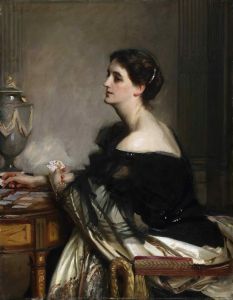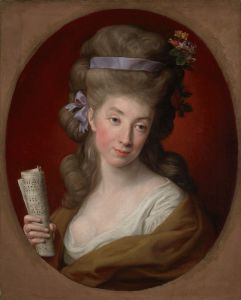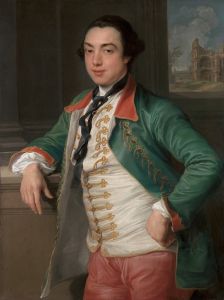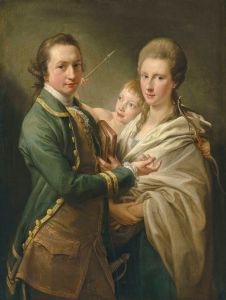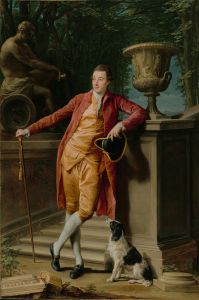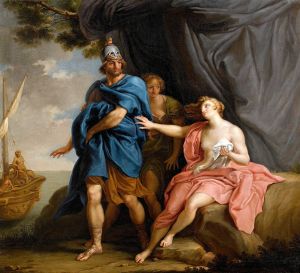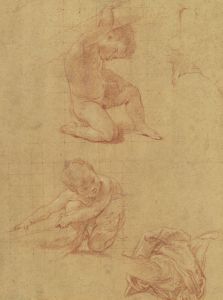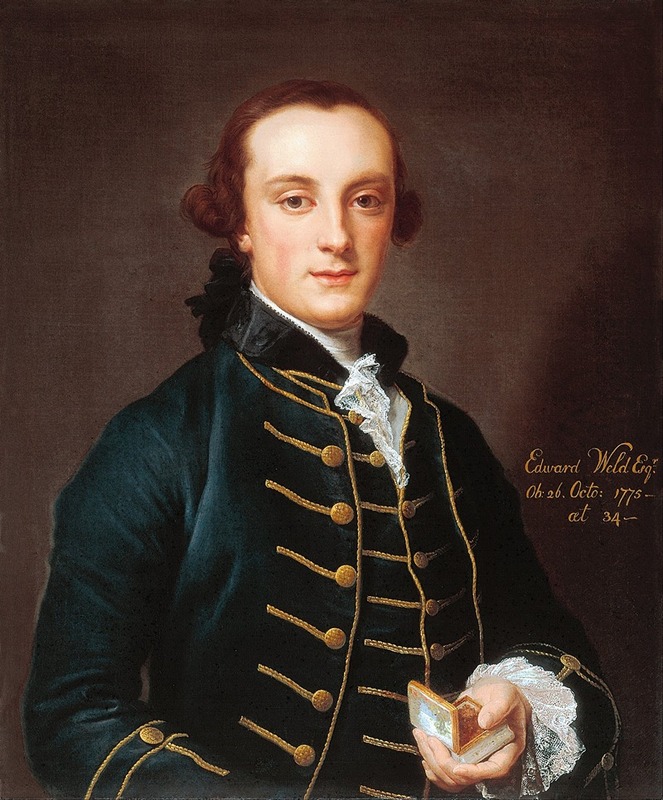
Edward Weld
A hand-painted replica of Pompeo Batoni’s masterpiece Edward Weld, meticulously crafted by professional artists to capture the true essence of the original. Each piece is created with museum-quality canvas and rare mineral pigments, carefully painted by experienced artists with delicate brushstrokes and rich, layered colors to perfectly recreate the texture of the original artwork. Unlike machine-printed reproductions, this hand-painted version brings the painting to life, infused with the artist’s emotions and skill in every stroke. Whether for personal collection or home decoration, it instantly elevates the artistic atmosphere of any space.
Edward Weld by Pompeo Batoni is a portrait painting created by the renowned Italian artist Pompeo Batoni. The painting depicts Edward Weld, an English gentleman from a prominent Catholic family. Edward Weld was born in 1740 and was a member of the Weld family of Lulworth Castle in Dorset, England. The Weld family was known for their wealth and influence, particularly within the Catholic community in England.
Pompeo Batoni, the artist, was one of the most celebrated portrait painters of the 18th century. Born in Lucca, Italy, in 1708, Batoni gained fame for his ability to capture the likeness and character of his sitters with great skill and elegance. He was particularly popular among British aristocrats who traveled to Italy on the Grand Tour, a traditional trip through Europe undertaken by young men of the upper class to complete their education.
The portrait of Edward Weld was painted during one of these Grand Tours. It is believed that Weld commissioned the portrait while he was in Rome, a common practice among wealthy young Englishmen of the time. The painting is a full-length portrait, showcasing Batoni's characteristic style of combining realism with a sense of grandeur and nobility.
In the portrait, Edward Weld is depicted standing, dressed in fashionable attire of the period. He wears a richly embroidered coat and waistcoat, with a lace cravat and cuffs, signifying his high social status. His pose is confident and relaxed, with one hand resting on his hip and the other holding a tricorne hat. The background of the painting features classical architectural elements, which were typical of Batoni's portraits and served to emphasize the cultured and educated nature of his subjects.
Batoni's attention to detail is evident in the intricate rendering of the fabrics and textures, as well as in the lifelike representation of Weld's facial features. The artist's use of light and shadow adds depth and dimension to the portrait, highlighting Weld's dignified presence.
Edward Weld's life, however, was marked by tragedy. He married Juliana Petre in 1763, but she died shortly after their wedding. He later married Mary Massey-Stanley, but he himself died in 1775, leaving no direct heirs. The Weld family continued to be influential, with Edward's brother Thomas Weld inheriting the family estates and becoming a notable figure in his own right.
The portrait of Edward Weld by Pompeo Batoni remains an important example of 18th-century portraiture and provides insight into the lives and aspirations of the British aristocracy during the period. It is a testament to Batoni's skill as an artist and his ability to capture the essence of his subjects with both accuracy and elegance.





